The Farmer Across the Road
Note from Peter: I’ve been corresponding recently with a fascinating guy name Bruce Vetter, a retired motorcycle builder who is now a passionate whole grain bread baker. I asked him if he’d be willing to share some of his unique personal story with our viewers and he sent me this photo essay. I’m hoping he’ll keep sending us contributions like this — he represents a rare breed of good old fashioned non-conformists who make life interesting for everyone around them. Enjoy!
When I was 14 I began to lead my life with a process of continual learning. I’ve always had great passion for whatever I may be learning and being 68 now I have a lifetime of learning under my belt. These last 2-3 years I’ve turned my attention to learning to bake whole wheat bread, which is far more difficult than I expected. I have 6 grand children and I want them to understand that processed food is not normal. I want them to know there is a better way to eat.
My goal is to bake 100% whole wheat bread that would be the bread of choice of my entire family. Using store bought whole wheat flour was a convenient option but I wanted more control over the type of wheat used, the methods of farming and processing, and the length of storage before I get it.
Initially I started ordering winter hard white and red wheat berries from Idaho, shipped in on pallets. The wheat was packaged for the long term in 6 gallon buckets. I also needed to be able to grind my own grain in large volume while limiting the amount of heat imparted to the flour.
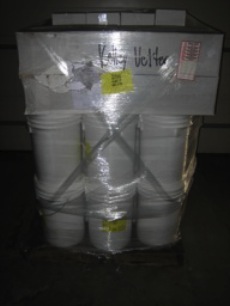
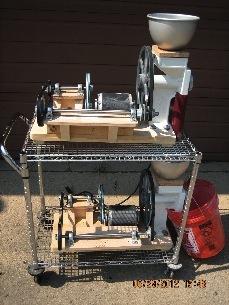
The above 2 grinding mills operate either independently, or, the top one delivers it’s coarse product through the maroon conduit to the lower mill for final milling. This limits and controls the amount of heat delivered to the final flour. Each mill will produce 6-8 lbs of flour per hour. (shown with belt guards removed)
The farmer across the road grows wheat and I asked him if I could purchase a full grain wagon. This amounted to 200 bushels (the product of 5 acres) weighing 14,000 lbs. The cost was $0.10/pound or $1,400. It was a lot of wheat and I was excited. I wanted to get my grain from as close to the grower as possible. The wheat from Idaho, by the way, cost $0.75/lb counting shipping.
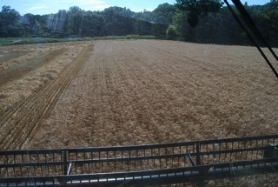
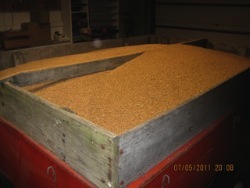
I have several local friends that think like me, so we shared this wheat by packaging it in my shop purged with Nitrogen and sealed in Mylar bags with Oxygen absorbers all within 5-6 gallon plastic buckets. In total we packed 344 buckets of wheat .
To test if there is sufficient Nitrogen, we use a flame over the bag. If the flame goes out we have enough Nitrogen and the bag is sealed.
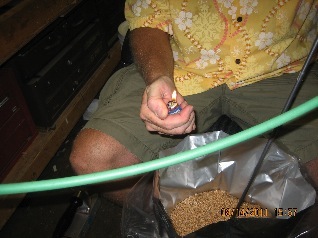
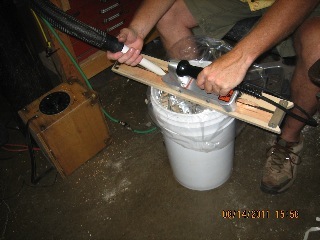
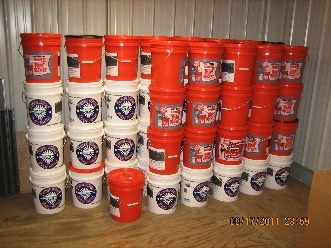 Counting everything but my labor, the cost of a bucket full of wheat is 8-9 dollars. This is 1/3 of what I kept, the rest being distributed among other local home bakers. Each bucket will take me 1-2 weeks to use up, from baking bread to rolling wheat for cereal and pancakes.
Counting everything but my labor, the cost of a bucket full of wheat is 8-9 dollars. This is 1/3 of what I kept, the rest being distributed among other local home bakers. Each bucket will take me 1-2 weeks to use up, from baking bread to rolling wheat for cereal and pancakes.
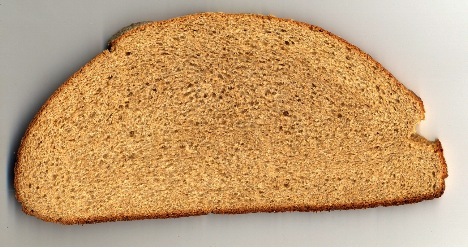 Until I read Peter’s book “Whole Grain Breads” every loaf I would bake was like a dense brick. Using his pre-fermenting process of soakers and bigas, now it looks the way proper bread should look: And the flavor and taste is my families favorite.
Until I read Peter’s book “Whole Grain Breads” every loaf I would bake was like a dense brick. Using his pre-fermenting process of soakers and bigas, now it looks the way proper bread should look: And the flavor and taste is my families favorite.
My grand children are being taught what’s required to bake the loaf of bread they eat for dinner. They grind the grain too and when they do I call them my “Grain Children”.
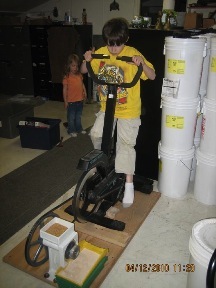
I bake bread in a wood burning oven during the winters and a gas oven when the weather is warm. I store about 13 cords of sawmill sawed deciduous wood, mostly oak measuring 6″ X 8″, stored in 40 large stackable wire metal baskets; each basket holds 800-1,000 lbs of wood with a volume of 1/3 cord. Each basket is color coded with a tag delineating the harvest date so I can better judge the seasoning. I have found that from when it is green until it is seasoned the wood will loose 17% of it’s mass through moisture loss. I like this method of storage because the wood continues to air dry, does not rot, and with a forklift I can “plug” a basket into a slot right next to my stove just like an audio cassette. I have limited handling, the biggest chore involving heating/cooking with wood. During the coldest weather a full basket will last 7-9 days.
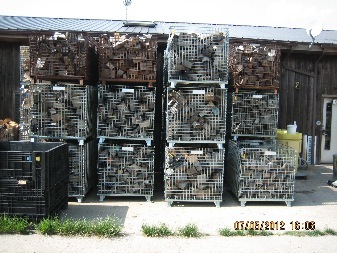
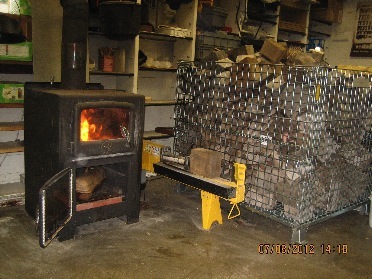
During the winter months my wood oven is hot 24 hours a day 7 days a week, but is only big enough for a single loaf at a time. I’m planning to make an earthen/clay outdoor wood fired oven capable of baking 4 loaves of whole wheat bread at a time. I’m really excited.
All this work and effort just to create this? One may ask if it’s worth it and to that I can only respond with an emphatic old guy “YES”.
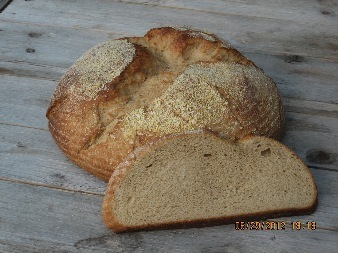
By the way, I buy corn from this same farmer too. In this case I just drive into his field and he fills me up. My family is also fond of cornbread but that’s another story. (This image is not staged or altered, Farmer Tom can really do this.)

Recent Articles by Bruce Vetter
Add Comment
You must be logged in to post a comment.










I can totally relate to what you say about you wanting your grandchildren to know that processed food isn’t normal and that there’s a better way to eat. You aren’t just telling them, you are showing them, educating them, AND getting them involved. I’m trying to teach my two young kids this as well.
I love your wood-burning stove and look forward to seeing the larger stove that you plan to build.
Thank you for the inspiration. I have Peter’s whole grain bread book and need to revisit it because I am trying to find a 100% whole wheat bread that everyone in my family enjoys for their daily bread. This was just the post I needed to get out my copy and start mixing up some soaked and bigas.
(Though now I also want to find some local wheat too!!)
Lots of neat things tied together in this article. Inspiring and motivating….
Bruce,
It’s interesting to come across a fellow Navy Nuke Submariner! As you know we are few and far between and your logical determination to make the process happen inspires me to continue on my own quest!
Bruce,
Will you be my friend? You sir, are RAD. I love this post. Thank you for being so inspiringly you.
Corrin
Bruce, neat to see what you’ve done with the mills etc. I was considering a similar path (getting local wheat berries and grinding myself). Except my main challenge was to make my own organic sprouted wheat flour.
Any chance of getting more info on your grinding mills and nitrogen setup? Cost to make, what parts you bought, from where?